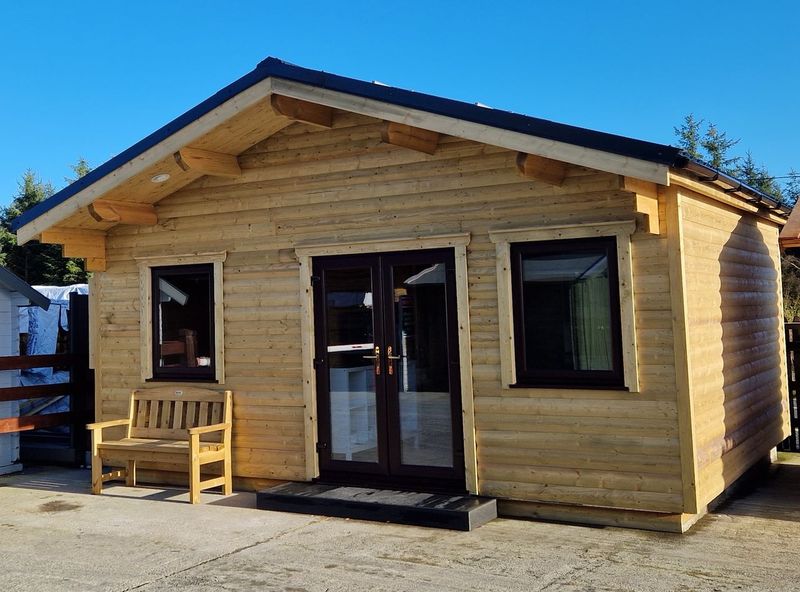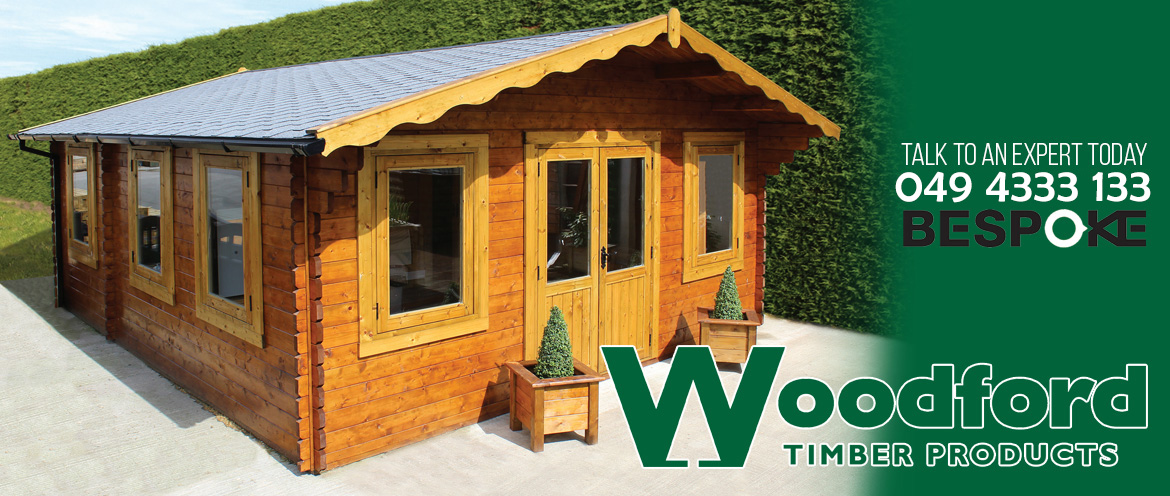Choosing between a house and a log cabin can be a very important decision that will impact many parts of your life from your overall lifestyle to your general well-being. Both options offer unique advantages and disadvantages, and the best choice for you will depend on your personal preferences, needs, and budget.
We have had many customers who have bought cabins as their forever homes, and maybe you could be next! But let’s discuss some things to consider first!

Location
The ideal location for your home depends on your personal preferences and lifestyle. It is important to consider factors like proximity to nature, privacy, commute times, and local amenities when choosing between a house and a log cabin.
House
Cabin
- Houses are more commonly in urban and suburban areas. This offers easy access to amenities like schools, hospitals, and shopping centers.
- While houses can be located in areas with natural surroundings, they often have more paved roads and developed infrastructure.
- Houses are often built close to or onto other houses.
- Houses can be situated closer to public transport, making commutes easier.
- Typically found in rural or forested areas, providing a more secluded and peaceful environment.
- Cabins aren’t usually built in areas with other cabins, which generally offers more privacy and quiet, especially in remote areas.
- May have lower property values in rural areas, but can appreciate over time due to their unique character and desirability.
Cost
The cost of a house or log cabin will depend on your specific needs, preferences, and the local market conditions. It’s essential to obtain accurate quotes from builders and contractors to make an informed decision.
House
Cabin
- Variable depending on size, location, materials, and finishes.
- Property taxes will also depend on property value, and local tax rates.
- Home insurance premiums will be affected by coverage options, and the homeowner’s insurance history.
- Utilities typically include electricity, water, gas, and heating. Consider energy efficiency and local rates of the house.
- Regular maintenance and repairs are necessary for all types of dwellings.
- Variable depending on size, location, materials, and finishes.
- Log cabins almost always cost less to build than a house.
- Log cabins are subject to property taxes like any other type of dwelling. However, in some regions, they may qualify for tax benefits or incentives.
- Log cabins may require specialised insurance policies dependant on age, condition and location.
- Log cabins can be naturally insulated, leading to lower energy bills.
- Log cabins sometimes require specific maintenance, such as sealing and treating to prevent rot and insect damage. While this can incur additional costs, the overall maintenance expenses should be comparable to those of a traditional house.
Energy Efficiency
Both houses and log cabins can be highly energy-efficient, but their specific characteristics can influence the way they consume energy. Log cabins often benefit from natural insulation provided by wood, while houses can be made energy-efficient through modern construction techniques and materials. Consider factors like location, design, and maintenance.
House
Cabin
- Houses can be highly energy-efficient using modern insulation materials like fiberglass, cellulose, or spray foam.
- Proper air sealing techniques can prevent drafts and energy loss.
- Energy-efficient appliances, HVAC systems, and lighting can significantly reduce energy consumption.
- The dense nature of wood provides natural insulation, helping to regulate temperature and reduce heat loss.
- Log cabins can absorb and store heat, releasing it slowly over time. This can help maintain a more consistent indoor temperature.
- Properly constructed log cabins can be highly air-tight, preventing drafts and energy loss.
Maintenance & Upkeep
Both houses and cabins require regular maintenance and upkeep to ensure their longevity and value. Log cabins have specific maintenance needs related to sealing and treating, but the overall maintenance requirements can be very comparable to those of traditional houses. Regular inspections, timely repairs, and proper care can help preserve the beauty and functionality of your home.
House
Cabin
Exterior Maintenance:
- Regular painting or staining is necessary to protect against the elements.
- Inspect and replace roofing materials as needed to prevent leaks.
- Repair or replace damaged siding.
- Maintain lawns, gardens, and other outdoor features.
Interior Maintenance:
- Repaint interior walls and ceilings as needed.
- Clean and maintain flooring materials, such as hardwood, tile, or carpet.
- Inspect and repair plumbing and electrical systems regularly.
Exterior Maintenance:
- Regular sealing and treating of the logs is essential to prevent rot, insect damage, and moisture penetration.
- Caulk gaps and cracks between logs to prevent air leaks and moisture intrusion.
- Monitor the foundation for signs of settling or damage.
Interior Maintenance:
- Similar to houses, log cabins require regular interior maintenance, including painting, flooring, and plumbing upkeep.
Aesthetics & Charm
The choice between a house and a cabin comes down to personal preference. If you value traditional architecture and spacious interiors, a house may be the ideal choice. However, if you prefer a blank canvas, a rustic, cosy atmosphere and a closer connection to nature, a cabin could be the perfect fit.
House
Cabin
- Houses come in a wide range of architectural styles, from modern and contemporary to traditional and historic. This versatility allows for customisation to suit individual preferences.
- Houses can be constructed with a variety of materials, including wood, brick, stone, and concrete, offering a wide range of aesthetic options.
- Houses can be equipped with modern amenities and conveniences, such as open-concept floor plans, high-end appliances, and luxurious finishes.
- Log cabins evoke a sense of nostalgia and connection to nature. The natural beauty of wood and the rustic aesthetic can create a warm and inviting atmosphere.
- Each log cabin has its own unique character, with variations in log patterns, textures, and finishes.
- Unlike most houses that were previously owned, building a log cabin means starting from a blank slate. This allows you to be as creative as you like.
- Log cabins often have a timeless appeal, retaining their charm and value over many years.
Lifestyle & Preference
If you prioritise space, amenities, and traditional living, a house may be the ideal option. However, if you value a peaceful, minimalist lifestyle and a strong connection to nature, a cabin could be the perfect fit.
House
Cabins
- If you prefer the hustle and bustle of city life, a house in an urban or suburban area may be more suitable.
- Houses in urban or suburban areas often offer easier access to social events, restaurants, and entertainment venues.
- Houses in densely populated areas may experience more noise and traffic.
- Larger families or those with growing children may prefer the spaciousness of a house.
- If you prefer a low-maintenance lifestyle, a modern house with minimal exterior upkeep might be more suitable.
- Houses can vary widely in price, but tend to be more expensive than cabins.
- Log cabins provide a rustic and natural aesthetic.
- If you enjoy a quieter, more peaceful environment, a log cabin in a rural setting could be ideal.
- Log cabins may require more travel for social activities, but can provide a more intimate and relaxed atmosphere.
- Log cabins aren’t as spacious as most houses, however they could be the perfect size for a single person, couple, or young family.
- Log cabins require regular maintenance, such as sealing and treating the logs.
- Log cabins may have a higher initial cost but are a lower long-term expense.
Whether you choose a house or a cabin, the ideal living space depends on your individual lifestyle, preferences, and needs.
Houses offer more space & amenities, making them suitable for larger families or those who value traditional living arrangements. On the other hand, cabins provide a simpler, more intimate experience, ideal for individuals or couples.
Ultimately, the best choice for you is the one that aligns with your lifestyle and priorities. Considering all of the factors previously discussed and carefully weighing them, you can find the perfect home that will bring you joy and fulfillment.


